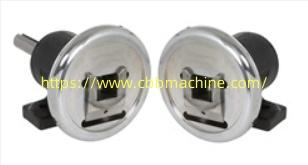In modern web guiding and roll-to-roll systems, the integration of a Safety Chuck plays a critical role in ensuring operational stability and quick shaft changeovers. These mechanical devices are commonly used in various winding and unwinding machines across industries such as paper, plastic film, foil, textile, and printing. Their primary function is to hold and drive the air shaft or mechanical shaft while allowing for safe and swift replacement when required, all without dismantling the drive system.
The housing design of this component contributes significantly to machine safety by locking the shaft during rotation and only allowing manual release when the machine is stopped. This reduces downtime while preventing injuries that may occur during handling. Due to this structure, operators gain more control, and maintenance becomes easier without compromising workflow efficiency.
Typically made from high-strength steel or alloy materials, these units are engineered for durability and to withstand the high torque generated during production. Their internal parts—like the insert and body—must maintain perfect alignment to reduce wear. Flange-mounted and foot-mounted options allow flexibility during equipment design and installation, catering to different factory setups.
Another essential feature is the compatibility with torque transmission systems such as clutch assemblies or gearboxes. This mechanical connection between the chuck and the driving motor ensures that the rotational energy is transferred accurately and without slippage. Consequently, this reduces mechanical failure risks and keeps production speeds consistent.
As automation in manufacturing increases, manually operated mechanisms like these may seem outdated. However, their simplicity and dependability make them a preferred option, especially in medium-speed lines where frequent shaft changes are required. When paired with expanding shafts or differential shafts, the equipment can adapt to different core sizes and materials quickly.
Proper maintenance and inspection schedules are key to longevity. This includes regularly checking for misalignment, inspecting the engagement notches for wear, lubricating the bearings, and cleaning out any dust or particles that could interfere with operation. When these practices are followed, the equipment can maintain its performance over many years of continuous use.
In conclusion, while the technology behind winding systems continues to evolve, this mechanical component remains indispensable for safe, efficient, and flexible machine operation. To learn more about its detailed functions, available types, and maintenance tips, visit https://www.cbbmachine.com/news/industry-news/safety-chucks-function-types-maintenance-and-more.html

